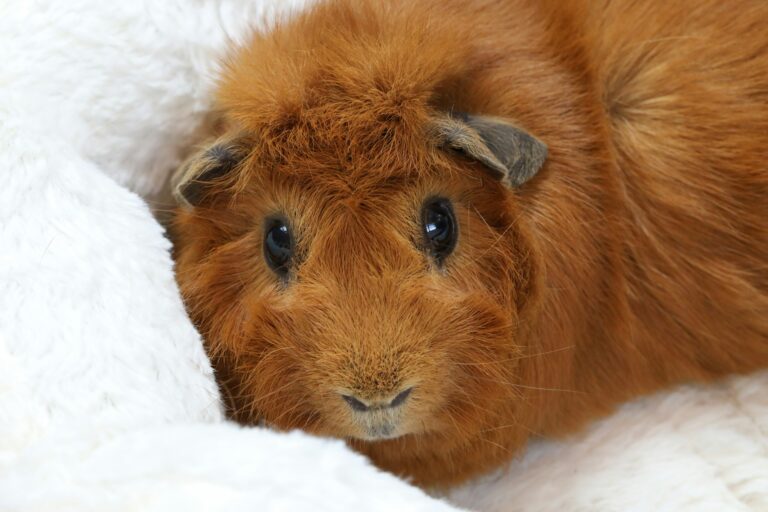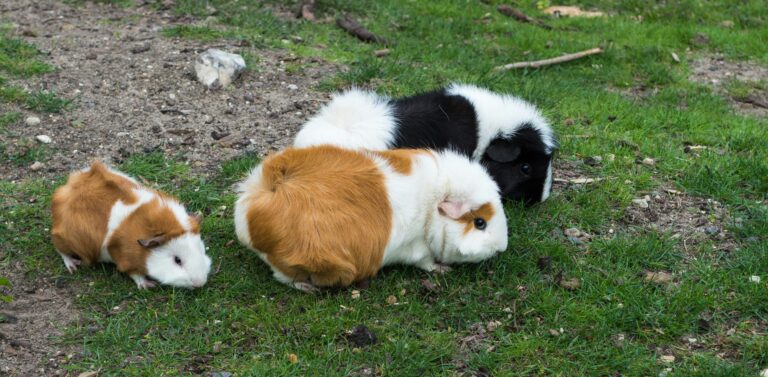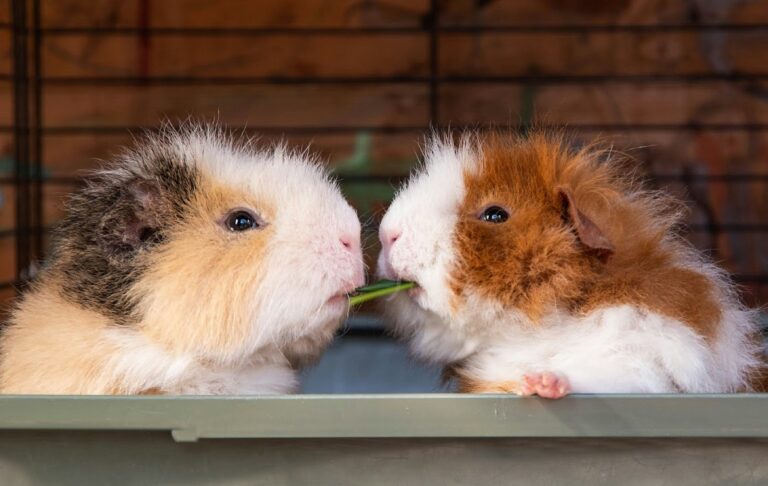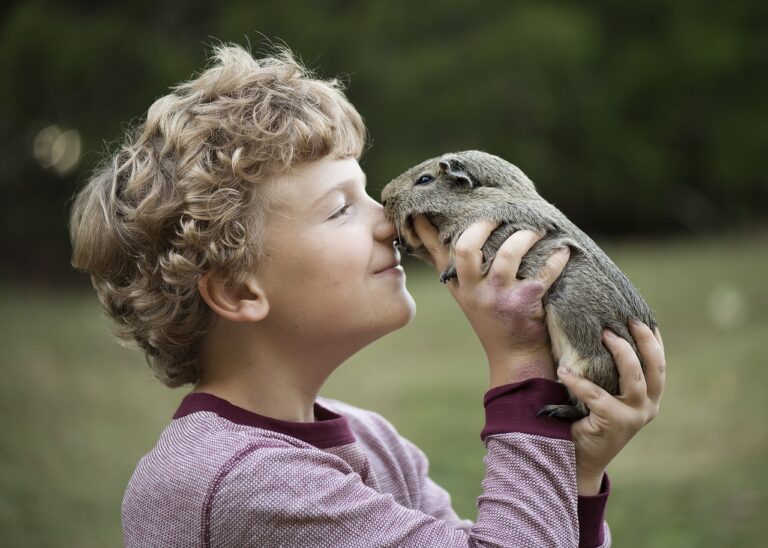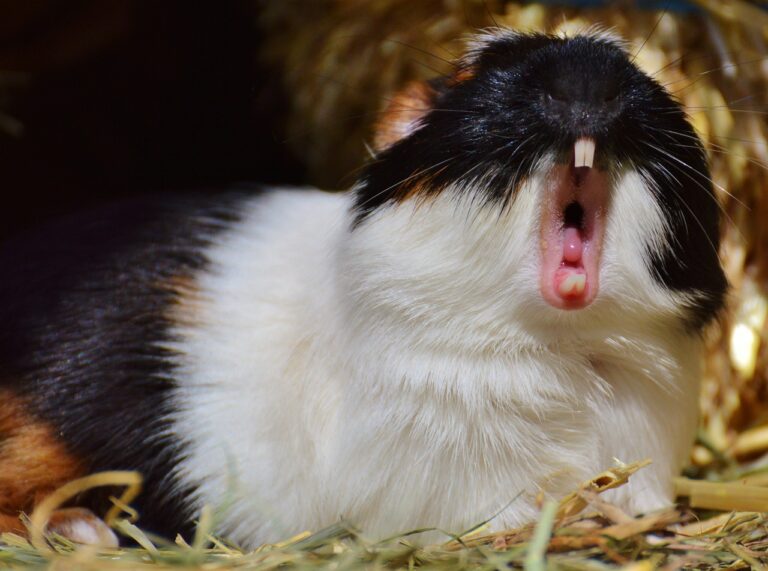Why Does my Guinea Pig have Cowlicks?
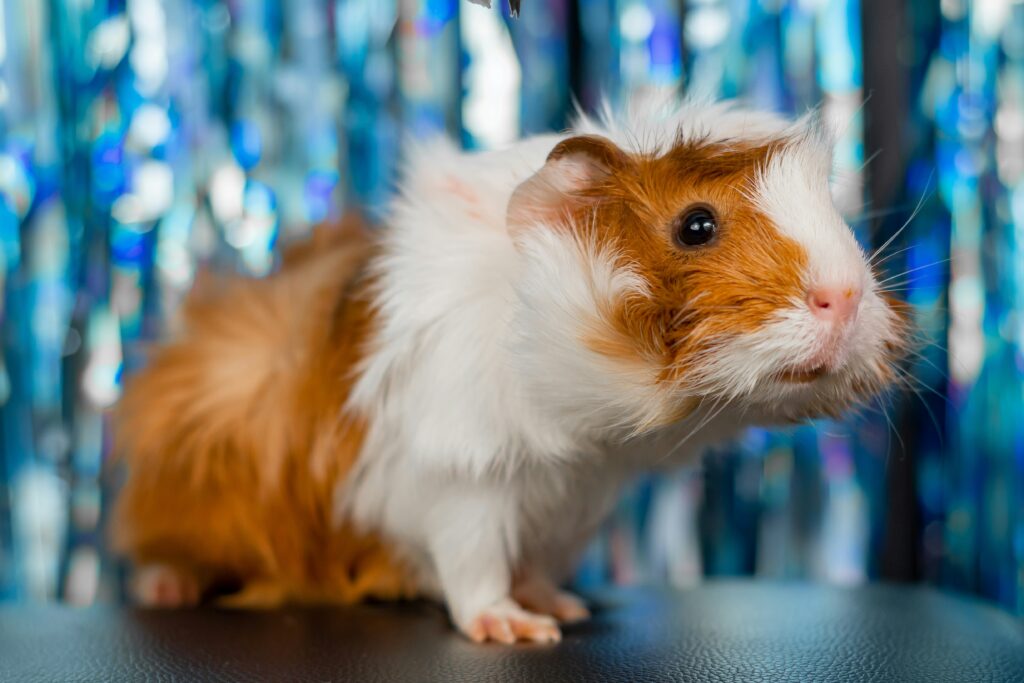
One distinctive feature that often captures the attention of guinea pig enthusiasts is the presence of cowlicks, also known as rosettes, in their coat. These swirling patterns add an extra layer of charm to these already endearing creatures.
In this guide, we’ll delve into the world of rosettes in guinea pigs, exploring what they are and how they vary across different breeds.
What are Cowlicks in Guinea Pigs?
Cowlicks, or rosettes, are circular or spiral patterns in a guinea pig’s coat where the hair grows in a different direction from the surrounding fur! These unique swirls create a visually striking effect, adding texture and depth to the guinea pig’s appearance. Cowlicks can occur in various locations on the body, including the shoulders, rump, and sides, and their size and shape can vary from small whirls to large, intricate patterns.
Guinea pigs can have between 1 and 10 rosettes, depending on breed!
Breeds with Characteristic Rosettes
Certain guinea pig breeds are known for their distinctive rosette patterns, which contribute to their unique breed standards and appeal. Let’s explore some of these breeds and their characteristic rosettes:
Abyssinian Guinea Pig
The Abyssinian guinea pig is perhaps the most well-known breed recognized for its striking cowlicks. Abyssinians typically have multiple rosettes distributed across their body, giving them a “mane” or “tufted” appearance. These rosettes are often found on the shoulders, rump, and hindquarters, creating a visually dynamic and textured coat. They usually have 6-8 rosettes, but rarely they can have as many as 10!
Satin Abyssinians are another guinea pig breed that share many of the same characteristics as the Abyssinian, but they also sport a unique sheen thanks to a recessive gene causing the hair shafts to be hollow.
Peruvian Guinea Pig
Peruvian guinea pigs are known for their long, luxurious hair that can grow up to 20 inches in length! Their coat features two dense rosettes that form distinctive “whorls” or “crowns” on the rump. The arrangement of these rosettes in Peruvian guinea pigs affects how the rest of their coat falls, and adds to their regal and elegant appearance!
Like the Abyssinian, Peruvian guinea pigs can also occur in a Satin variation!
Coronet Guinea Pig
Coronet guinea pigs are known for their long, flowing hair and distinctive “crest” or “frill” on the head. Unlike Abyssinians or Peruvians, they only have one rosette, but it contributes to their glamorous and showy appearance, making them popular choices for exhibitions and competitions.
White Crested Guinea Pig
The White Crested is a less common guinea pig breed. Like the Abyssinian, it is short haired, but it only sports one white rosette, that sits on its head like a crown! They come in several colors, but their body is always solid colored, with the single white rosette.
Care and Maintenance of Rosettes
While rosettes in guinea pigs are a natural and charming feature, they may require special care and maintenance to keep them in optimal condition. Regular grooming is essential to prevent tangling, matting, and discomfort, particularly in long-haired breeds like Peruvians and Coronets. Use a soft-bristled brush or comb to gently detangle rosettes and remove debris, being careful not to pull or tug on the hair!
Conclusion
Cowlicks, or rosettes, are fascinating and visually striking features that add to the allure of guinea pigs. Whether they adorn the coat of an Abyssinian, Peruvian, Coronet, or White Crested, rosettes contribute to each breed’s unique appearance and charm. By understanding the significance of rosettes and providing proper care and maintenance, guinea pig owners can ensure that their furry companions remain healthy, happy, and beautifully adorned with their signature swirls!

